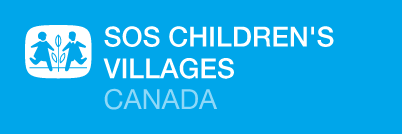Relief and Reconstruction by SOS Children's Villages
|
"I didn't know whether I could cope with the disaster", says Masriya, recalling the shock that she, her family and hundreds of thousands of other people suffered as a result of the tsunami. Immediately after the tsunami there was a scene of complete devastation, not just in terms of material items, but also in terms of the people themselves.
|
The greatest problems faced were the scale of the disaster, the infrastructure that had been completely destroyed in many areas, the lack of coordination, the large distances, changing laws and a precarious security situation in some areas.
The emergency relief that lasted for several months reached out to 23,000 people from the south-west coast of Sri Lanka to Banda Aceh on the Indonesian island of Sumatra. Trauma centres were set up for children, as were nurseries to relieve parents. Emergency relief packages, clothes, medication and school materials were distributed, start-up money was provided for families, and over 340 fishing boats were made available.
From the outset, it was clear to SOS Children's Villages that the programmes that would follow the emergency relief were to have a long-term impact so that people would be in a position to manage their lives in the future without external aid and that coming generations would be able to build on this support.
The active participation of communities was as important to SOS Children's Villages as respect for cultural and local characteristics, the sustainability and quality of projects and the focus on the special needs of families and their children. Despite great difficulties, the vast majority of projects were implemented within the scheduled timeframe.
SOS Children's Villages built more than 2,200 family houses in 15 locations and carried out repairs to the infrastructure of whole villages. 18 multi-purpose centres were established. These serve as contact points for families, social facilities such as kindergartens, vocational trainings for girls and mothers in particular, health centres and as places of refuge during floods. The centres are due to be handed over to the communities after a period of three to five years so that they can manage them themselves.
The tidal waves killed thousands of children. Many children were orphaned. Many more lost one of their parents, siblings and/or other relatives. And again, it was a disaster that affected those who had already faced difficult living conditions before the tsunami most. Six new SOS Children's Villages were built for children who had lost their parents and whose extended families are not able to look after them. Kindergartens, social centres and a number of family strengthening programmes are mainly intended to ensure the survival of children and keep families together, as well as to encourage communities to organise themselves.
"We have come across village communities that have helped and are still helping each other in the most difficult of situations", said Siddhartha Kaul, director for SOS Children's Villages in Asia. People have gradually learnt to have trust in life and believe in the future again, as well as look forward to it, despite the shadows of the past. "It's great to watch my children play and to hear them laugh again", says Tamilselvi from Nagapattinam in India.
| SOS Children's Villages commemorates the many children who died on 26 December 2004, trusting in the future of the coming generations. |
